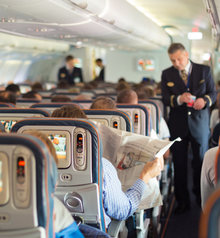 17 Nov 2025
17 Nov 2025
Tags: Airlines And Aviation, Flights, Travel Advice

Middle seats have long had a bad reputation, but travel experts say they may not be the biggest comfort issue on board.
Sam Argyle, Managing Director at Alternative Airlines, says passengers often overlook other seating factors that can have a much greater impact on comfort, noise, movement and even post-flight fatigue.
“Most flyers focus on avoiding the middle, but the back of the aircraft — near toilets and galleys — tends to be consistently worse for comfort,” Argyle said. “You get engine noise, foot traffic, odours, and you're the last to get off the plane.”
Seat pitch and width are two of the most important, and quite often most misunderstood, factors. Research shows short-haul economy seat widths can be as little as 15.5 inches, while long-haul cabins typically range between 16.2 and 18 inches. Pitch in economy can vary from 28 to 34 inches depending on the aircraft and airline.
For taller passengers or anyone flying more than two hours, experts say those extra inches matter far more than which side of the aisle you're on.
Noise sensitivity is another overlooked issue. Seats located behind or directly beneath the wings are typically the loudest, which can lead to increased fatigue, especially on overnight or long-haul flights.
Not all “good” seats are straightforward, either. Exit-row areas may look attractive, but the row immediately in front often has limited or no recline due to safety rules, making sleep harder on night flights.
Mobility is also a growing health concern. Parliamentary research has warned that limited movement on modern long-haul aircraft can have adverse effects, which is why some travellers deliberately choose aisle seats to make it easier to stand, stretch and move about.
Experts generally advise:
- For flights 3+ hours: prioritise legroom and mobility over seat position
- For shorter flights: seats closer to the front can reduce time on board
- For light sleepers: avoid seats near galleys, toilets, wings and rear cabin areas
The same parliamentary research has called for clearer and standardised seat dimension listings so travellers can make more informed choices before they fly, noting that many of the comfort factors on board are cumulative rather than isolated.
“When people say flying feels harder than it used to, it's rarely just one thing,” Argyle said. “It's the combination of noise, space, heat, timing and movement all happening at once.”
Ends
For further press information, contact:
Katie Gravett
kgravett@alternativeairlines.com
Notes to editors
Alternative Airlines is on a mission to take the friction and frustration out of flight booking, making the experience effortless for travellers everywhere. By partnering with over 40 of the world's leading flexible payment brands such as Klarna, Clearpay and PayPal, they give passengers the power to pay in manageable instalments. Moreover, by combining the latest airline booking technology with exceptional customer support, they are innovating and simplifying the booking process to give their global customers access to a seamless flight booking experience.

